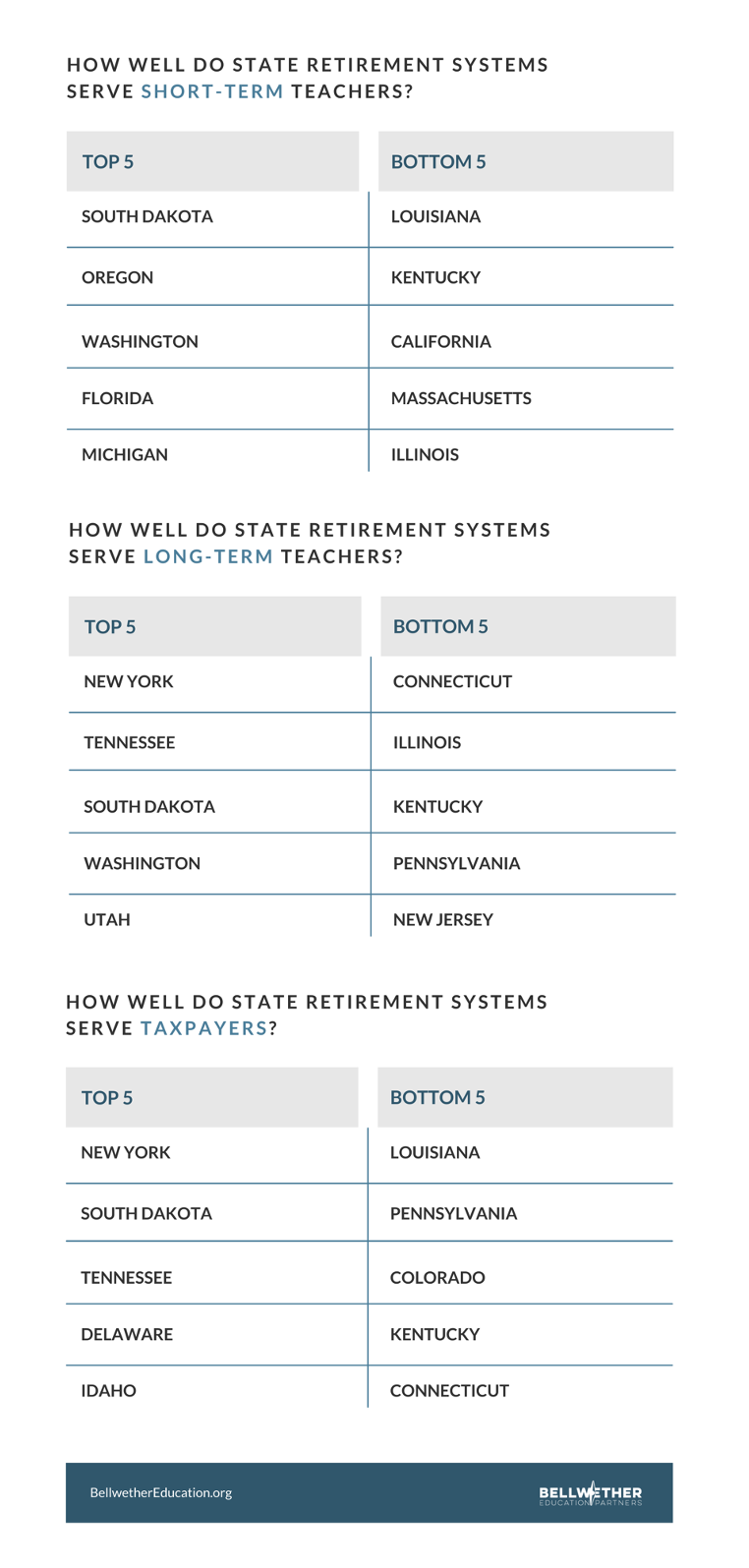Teacher retirement plans are called “gold plated” by their proponents and critics alike, when in fact half of teachers will never see a pension at all. Only about one in five teachers gets a full pension. And in many cases retirement benefits shortchange teachers and make it harder for them to save for their retirement.
In Teacher Retirement Systems: A Ranking of the States,* Bellwether Education Partners ranks how state retirement systems serve U.S. teachers and taxpayers:

The pension debate is too often about pensions versus 401(k)-style plans or whether the ideal educator is a 30-year veteran or a teacher with five years of classroom experience. This obscures just how poorly retirement systems are serving most teachers and the variety of ways policymakers can do better. It’s time to focus on an equitable retirement solution that benefits all of America’s teachers.
- Download Teacher Retirement Systems: A Ranking of the States
- Read Money Magazine’s take on the state of teacher retirement systems.
- Watch the Education Writers Association’s webinar on teacher retirement programs.
Read more about Bellwether’s teacher pension work:
- Teacher Pensions, Explained in Less Than 3 Minutes
- Hidden Penalties: How States Shortchange Early-Career Teachers
- How Do Retirement Plans Work for Teachers?
- Teachers’ $500 Billion (and Growing) Pension Problem
Download the full report here or read it in the viewer below.
*Revised Nov. 12, 2021 to include an updated teacher contribution rate of 7.0% in Connecticut as well as adjustments to the COLA structure, interest credit, and vesting data for Indiana’s default hybrid plan. These changes slightly decreased Indiana’s ratings and rankings.